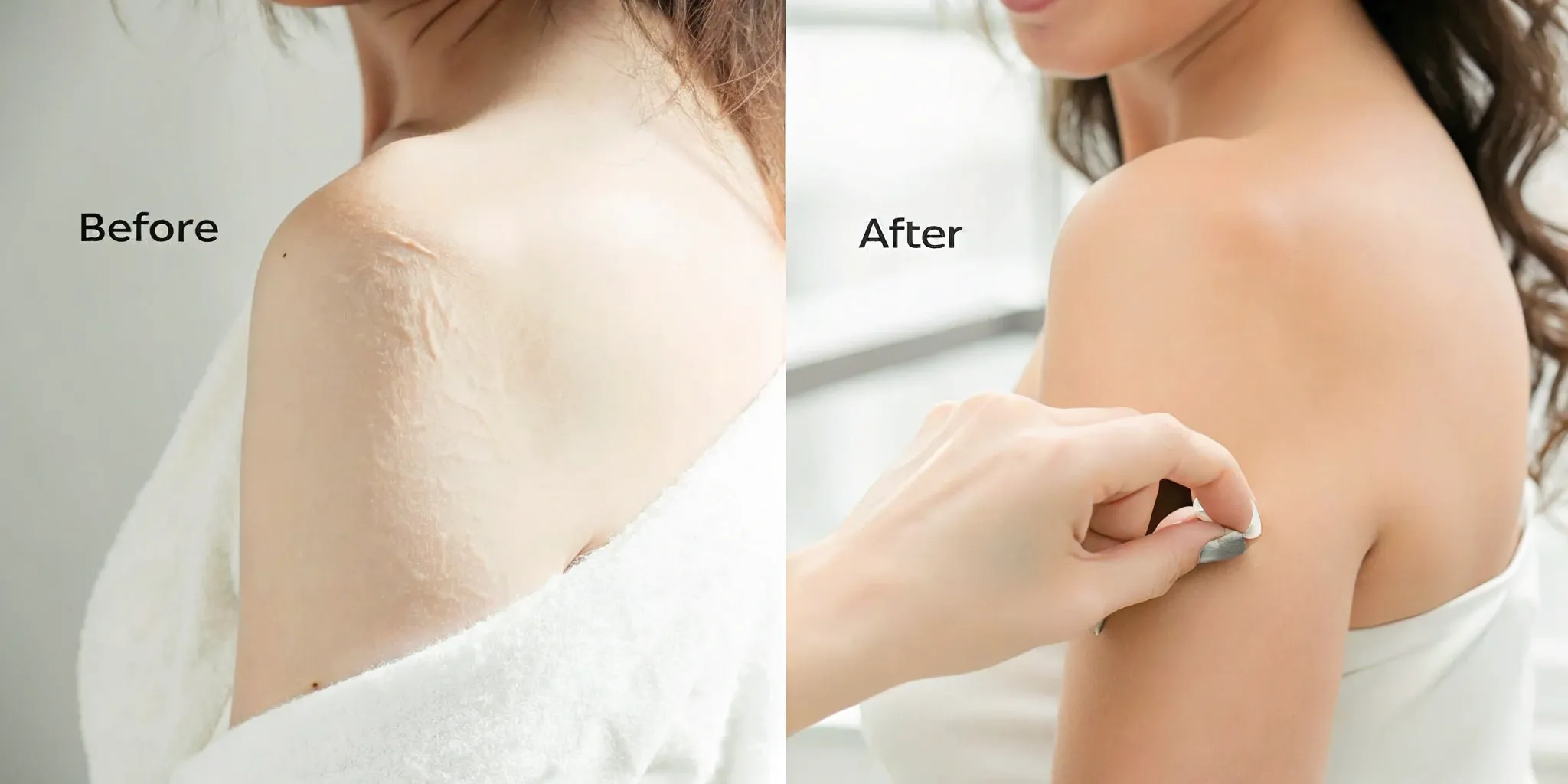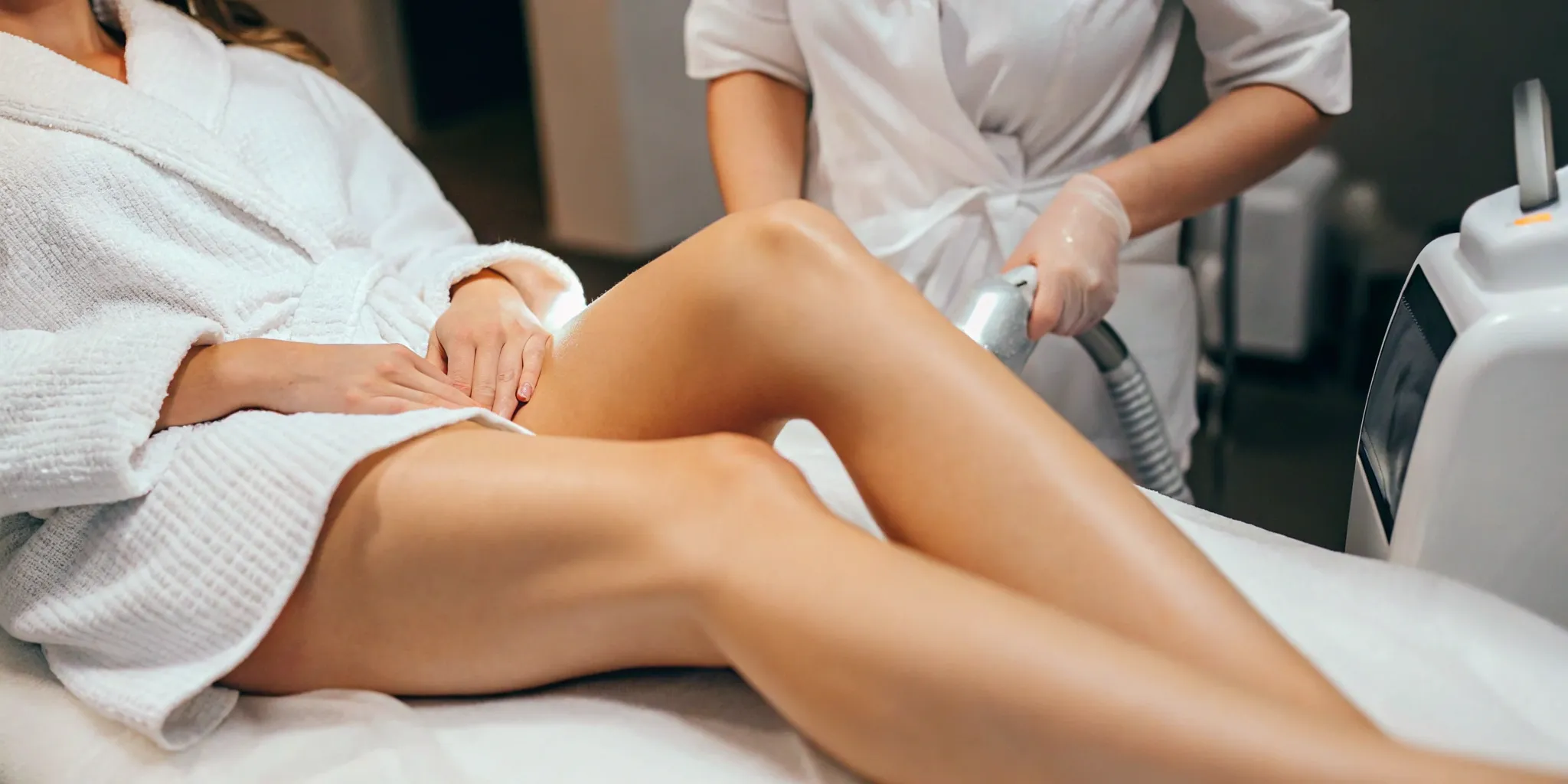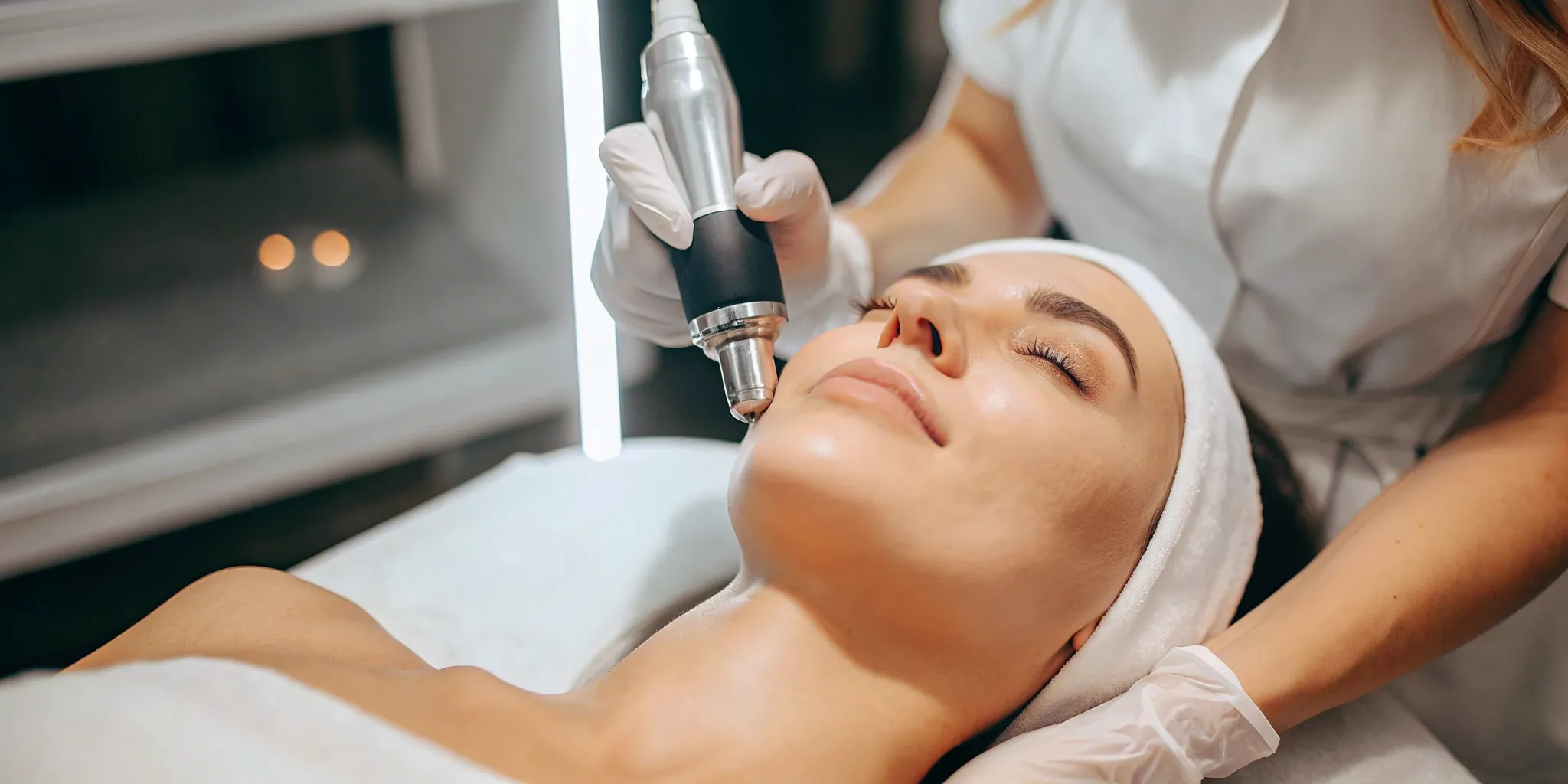Tattoos tell stories, but sometimes those stories change. If you’re considering updating your personal narrative, understanding the options available through professional tattoo removal services is essential. This guide offers a comprehensive overview of the tattoo removal process, including various methods, factors affecting success, and what to expect during your journey. We’ll also delve into choosing a qualified provider and debunking common myths surrounding tattoo removal. Whether you’re in Texas and seeking a local expert or simply researching your options, this information will help you make informed decisions and feel confident about your next steps.
Key Takeaways
- Tattoo removal is a viable option for many. Modern laser technology offers a safe and effective way to remove unwanted ink, providing a fresh start. Understanding the process and aftercare is essential for the best results.
- Finding the right provider is crucial. Look for experienced professionals using advanced laser technology and offering personalized treatment plans. A thorough consultation is key to addressing your specific needs and setting realistic expectations.
- Preparation and patience are essential for success. Before your appointment, gather information, prepare questions, and understand that multiple sessions are often needed. Diligent aftercare and realistic expectations contribute significantly to achieving your desired outcome.
What is Tattoo Removal & Why Consider It?
Tattoo removal is a procedure that uses specialized lasers to break down the ink particles in your skin. Your body then gradually eliminates these fragmented particles, lightening the tattoo’s appearance. While tattoos were once considered permanent, advancements in laser technology have made removal a safe and effective option for a fresh start. If you’re considering tattoo removal, learning about the process and aftercare is a smart first step.
Common Reasons for Tattoo Removal
People choose tattoo removal for various reasons, often simply due to changing tastes. What you loved years ago might not fit your current style. Life changes, like a new career or relationship, can also prompt removal. Sometimes, the initial tattoo doesn’t meet expectations, or it reminds someone of a past they’d rather not revisit. It’s a personal decision, and understanding these motivations helps create a supportive environment for those exploring this option. The tattoo removal industry has evolved to meet these diverse needs.
Tattoo Removal Candidates
Good candidates for tattoo removal are generally healthy individuals with realistic expectations. Complete removal may take multiple sessions, and factors like ink color, skin type, and tattoo location can influence the outcome. A commitment to proper aftercare is essential for the best results. Before your first appointment, gather information and prepare your questions. Bringing photos of your tattoo when it was fresh and wearing comfortable clothing to your consultation will help ensure a productive discussion with your provider.
Tattoo Removal Methods Explained
So, you’re considering tattoo removal? It’s helpful to understand your options. This section breaks down the most common techniques, including laser removal and other less common alternatives, to help you make an informed decision.
How Laser Tattoo Removal Works
Laser tattoo removal is the most common and effective method for removing unwanted ink. During a laser tattoo removal session, a trained technician uses a specialized laser to target the ink particles in your skin. The laser emits short pulses of light that are absorbed by the tattoo ink, causing the ink to fragment into smaller particles. Your body’s immune system then gradually eliminates these tiny particles, fading the tattoo over time. This process is typically repeated over several sessions for optimal results, as each treatment breaks down more of the ink. Learn more about laser tattoo removal.
Surgical Excision, Dermabrasion, & Other Alternatives
While laser removal is the go-to method, alternative tattoo removal techniques exist. Surgical excision involves cutting out the tattooed skin and stitching the surrounding skin together. This method is generally only suitable for small tattoos due to the potential for scarring. Dermabrasion involves sanding down the skin to remove the surface layers, including the tattoo ink. However, this method can be painful and may also result in scarring. Both surgical excision and dermabrasion carry higher risks of complications and longer recovery times compared to laser tattoo removal. Explore alternative tattoo removal methods.
Pros & Cons of Each Method
Each tattoo removal method has its own set of advantages and disadvantages. Laser tattoo removal is generally considered the safest and most effective option for various tattoo colors, sizes, and locations. While it requires multiple sessions and can be more expensive upfront, it offers a lower risk of scarring and a faster healing time. Surgical excision provides a one-time solution for small tattoos, but the potential for scarring makes it less suitable for larger or more visible tattoos. Dermabrasion, while potentially effective, carries a higher risk of complications and a longer recovery period, making it a less popular choice. The best method for you will depend on your individual needs and the nature of your tattoo. Consulting with a qualified tattoo removal specialist, like the experts at Ultimate Image MedSpa, is crucial to determine the most appropriate approach.
Your Tattoo Removal Journey: What to Expect
Thinking about having a tattoo removed? It’s a big decision, so understanding the process is essential. This section walks you through what you can expect from start to finish.
Initial Consultation & Assessment
Your journey begins with a consultation at a reputable removal studio like Ultimate Image MedSpa. This first step helps you understand the entire tattoo removal process and potential results, and gives you a chance to address any concerns. Come prepared with photos of your tattoo when it was fresh and wear clothing that allows easy access to the area. Write down any questions beforehand to make sure you cover everything important. Be open about your medical history and any previous removal attempts, as this information is vital for developing a personalized treatment plan.
Treatment Sessions, Pain Management, & Aftercare
Laser tattoo removal involves multiple sessions spaced several weeks apart. The exact number depends on factors like your tattoo’s size, the ink colors, and your skin type. During treatment, the laser targets the tattoo ink, breaking it down into smaller particles that your body can naturally eliminate. The sensation is often described as similar to a snapping rubber band against the skin, but it varies. Many providers offer numbing creams or cooling devices to minimize discomfort. Learn more about laser tattoo removal.
After each session, proper aftercare is essential for optimal results and minimizing potential side effects. Your skin will likely be sensitive, so protecting it from the sun is crucial. Follow your provider’s aftercare instructions carefully, which typically include keeping the area clean, applying ointment, and avoiding certain activities. The healing process generally takes one to two weeks, but complete recovery can take up to eight weeks. Remember, patience is key throughout this process. Consistent aftercare and realistic expectations will help you achieve your desired outcome.
Factors Affecting Tattoo Removal Cost & Success
Deciding to remove a tattoo is a big step, so understanding the factors that influence both cost and the likelihood of success is essential. Let’s break down the key elements that play a role:
Tattoo Characteristics, Skin Type, & Ink Quality
Several factors related to your tattoo itself will affect removal. Size is an obvious one—larger tattoos require more treatment sessions, impacting the overall cost. The color and type of ink also matter. Professional tattoos often use higher-quality inks and denser application techniques, making them more challenging to remove. Similarly, multicolored tattoos require different laser wavelengths for each color, adding complexity and potentially increasing the cost. Where your tattoo is located on your body can also influence the removal process, as some areas respond to treatment more readily than others. Your individual skin type also plays a significant role. Those with lighter skin tones typically see results with fewer sessions, while those with darker skin tones may require a more cautious approach and potentially more sessions. For more information on how skin type affects tattoo removal, check out this helpful resource.
Tattoo Age & Cost Considerations
The age of your tattoo matters too. Older tattoos, especially those faded by sun exposure or simply the passage of time, are generally easier to remove. The ink particles in these tattoos have already begun to break down, making them more receptive to laser treatment. This can translate to fewer sessions and a lower overall cost. When budgeting for tattoo removal, it’s helpful to know that complete removal often takes between eight and twelve sessions, though this can vary based on individual factors. Many providers offer different payment structures, such as a Complete Removal Package or a pay-per-session option, allowing you to choose the approach that best suits your financial situation. Removery offers a helpful guide to understanding laser tattoo removal costs. To discuss your specific tattoo and explore the options available to you, contact us at Ultimate Image MedSpa.
Choosing a Qualified Tattoo Removal Provider
Finding the right tattoo removal provider is crucial for a safe and effective experience. This decision requires careful consideration of qualifications, technology, and the overall approach to patient care. Take your time to research and choose a provider who understands your needs and prioritizes your well-being.
Key Qualifications & Certifications
Look for clinics staffed by certified and experienced laser technicians working under the supervision of a qualified medical director. A medical director’s oversight ensures treatments are performed safely and effectively. Confirm the clinic uses advanced, FDA-approved lasers, like those at Ultimate Image MedSpa, known for their precision and ability to target specific ink colors without harming surrounding skin. These advanced lasers often lead to better results than older technologies. Ask about the specific types of lasers used and the provider’s experience with them.
Consultation Questions & Service Evaluation
A thorough consultation is essential before starting any tattoo removal treatment. During your consultation, bring photos of your tattoo when it was fresh to help the provider assess its characteristics. Wear comfortable clothing that allows easy access to the tattoo for evaluation. Most importantly, prepare a list of questions and concerns to discuss with the provider. Openly communicate your medical history and any previous tattoo removal attempts. This information helps the provider tailor a treatment plan specifically for you. Removery offers helpful resources on what to expect during your first session and beyond.
Use the consultation to learn about the clinic’s experience with similar tattoo removals, the technology they use, and their aftercare recommendations. Discuss expected outcomes, the estimated number of sessions, and the total costs. A reputable provider will address all your questions and ensure you feel comfortable and informed before proceeding. Choosing the right provider is the first step toward achieving your desired results.
Preparing for Your Tattoo Removal Appointment
Getting ready for your tattoo removal appointment can make the whole process smoother and more comfortable. This section covers everything you need to know, from pre-treatment care to setting realistic expectations.
Pre-Treatment Care & What to Expect
Before your first appointment, gather some helpful information. Photos of your tattoo when it was fresh, especially for larger or more complex designs, give your technician a clear baseline. Wear comfortable clothing that allows easy access to the tattoo; a loose t-shirt or tank top usually works well. It’s also smart to prepare a list of questions and concerns to ensure you cover everything important during your consultation. Finally, be upfront about your medical history and any previous removal attempts. This information is crucial for tailoring the treatment to your specific needs. Learn more about what to expect during a typical tattoo removal consultation.
Your initial consultation will involve an assessment of your tattoo and skin type. The technician will explain the process, discuss potential outcomes, and create a personalized treatment plan. They’ll also review pre-treatment care instructions, which typically include avoiding sun exposure and tanning beds for several weeks before your session. Protecting your skin from UV rays is essential for minimizing the risk of complications. You’ll also need to avoid certain medications or topical creams that can interfere with the laser. Your technician will provide a detailed list of any substances to avoid. Knowing what to expect from your first session can ease any anxiety you might have.
Managing Expectations
Tattoo removal is a process, not a one-time event. It typically requires multiple sessions spaced several weeks apart. The exact number of sessions depends on factors like the tattoo’s size, ink density, and location. Preparing for your first laser tattoo removal session involves understanding that complete removal isn’t always guaranteed. While significant fading is often achievable, some residual pigment might remain, especially with certain ink colors.
After each session, proper aftercare is essential. Your technician will provide detailed instructions, but generally, you’ll need to keep the treated area clean and protected. Avoid picking or scratching the skin, as this can impede healing and increase the risk of scarring. Proper aftercare promotes healing and minimizes potential side effects. Be patient throughout the process. Your skin needs time to heal between treatments, and results become more noticeable over time. Understanding the healing process after laser tattoo removal is key to a successful outcome. Remember, everyone’s skin reacts differently, so be prepared for a unique healing journey.
Debunking Tattoo Removal Myths
Let’s clear up some common misconceptions about tattoo removal. It’s important to have realistic expectations before starting the process.
Removal Guarantees, Pain, & Results
One of the biggest myths is the guarantee of complete removal. While many people experience significant fading or complete disappearance of their tattoo, it’s not always a certainty. Factors like ink density and depth, as well as your body’s natural ability to break down and eliminate the ink, influence the outcome. Think of it like any other cosmetic procedure—results can vary.
Another common concern is pain. Most people describe the sensation of laser tattoo removal as similar to a rubber band snapping against the skin. Discomfort levels vary, and pain management options are often available. The good news is that treatment sessions are typically short. Healing usually takes one to two weeks, although complete recovery can take up to eight weeks. Following aftercare instructions closely is key for optimal results.
Potential Side Effects
Like any medical procedure, laser tattoo removal has potential side effects. These are usually temporary and can include blistering, scabbing, itching, and changes in skin pigmentation. Proper aftercare is essential to minimize these effects and promote healing. Protecting the treated area from sun exposure is crucial during the healing process. Your technician will provide detailed aftercare instructions to help you manage these potential side effects and ensure a smooth recovery. If you’re considering tattoo removal, schedule a consultation to discuss your individual needs and expectations.
Leading Tattoo Removal Providers
Finding the right tattoo removal provider is crucial for a safe and effective experience. Several reputable providers offer advanced laser tattoo removal services, each with its own strengths and specializations. Here’s a closer look at some leading options:
Ultimate Image MedSpa
Ultimate Image MedSpa prioritizes personalized care and optimal results for its clients seeking tattoo removal. They use cutting-edge laser technology suitable for all skin types, with specific considerations for darker skin tones. Their comprehensive guide offers valuable insights into the tattoo removal process, from the science behind it to what you can expect during and after treatment. This commitment to client education and personalized treatment plans makes them a standout choice.
Removery
Removery focuses solely on tattoo removal, building their expertise and reputation around this specialized service. They offer a range of removal options tailored to individual needs, using advanced laser technology to effectively break down tattoo ink. With a supportive environment, Removery aims to make the removal process as comfortable as possible.
LaserAway
LaserAway is a well-known provider of laser tattoo removal services. They offer various laser treatments designed for different skin types and tattoo colors, using state-of-the-art technology. LaserAway emphasizes client satisfaction and provides aftercare support to ensure a safe and effective removal process.
Ideal Image
Ideal Image is a recognized name in the aesthetics industry, offering tattoo removal as part of their comprehensive range of treatments. They prioritize client safety and use advanced laser technology for effective ink removal. Known for their professional staff, Ideal Image provides thorough consultations to create personalized removal plans.
Milan Laser Hair Removal
While primarily known for laser hair removal, Milan Laser also provides tattoo removal services. They use advanced laser technology to target tattoo ink and emphasize personalized treatment plans and thorough consultations to achieve the best possible results. Their focus on a comfortable client experience extends to their tattoo removal services.
Related Articles
- Laser Tattoo Removal at Home: Safe or Risky? – Ultimate Image MedSpa
- Laser Tattoo Removal | Everything You Need to Know
- Complete Color Tattoo Removal: An Expert Guide – Ultimate Image MedSpa
Frequently Asked Questions
Does tattoo removal completely erase the tattoo?
While laser tattoo removal is highly effective, complete removal isn’t always guaranteed. Many factors influence the outcome, including the ink’s age, color, and how deep it was applied. Significant fading is common, and many tattoos disappear completely, but some faint traces of pigment might remain. A qualified technician can assess your tattoo and give you a realistic idea of what to expect.
How many laser tattoo removal sessions will I need?
The number of sessions varies depending on several factors, including the size and complexity of your tattoo, the colors used, your skin type, and how your body responds to the treatment. Most people require multiple sessions spaced several weeks apart, typically between eight and twelve. Your provider will develop a personalized treatment plan after assessing your tattoo.
Is laser tattoo removal painful?
Most people describe the sensation as similar to the snap of a rubber band against the skin. Discomfort levels vary, and many providers offer numbing creams or cooling devices to minimize any pain. Treatment sessions are usually short, which helps make the experience more manageable.
What’s the typical cost of laser tattoo removal?
The cost depends on factors like the tattoo’s size, location, and the number of sessions required. It’s best to schedule a consultation with a provider to get a personalized quote. Many clinics offer package deals or payment plans to make the cost more manageable.
How do I choose a qualified tattoo removal provider?
Look for providers with certified laser technicians and medical oversight. Ask about the types of lasers they use and their experience with similar tattoo removals. A thorough consultation is essential. Bring photos of your tattoo when it was fresh, and don’t hesitate to ask questions about their experience, technology, and aftercare protocols. A reputable provider will prioritize your safety and satisfaction.







